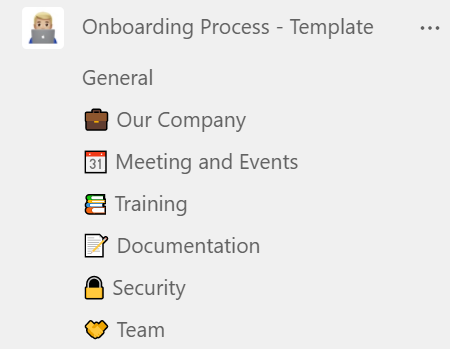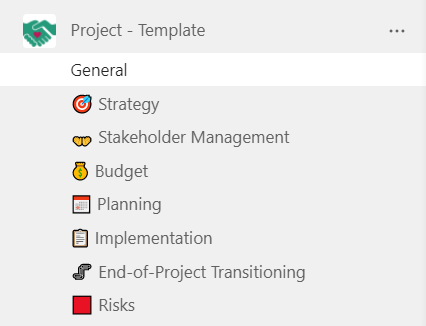By now, everyone has heard about Microsoft Teams. While most of its users see it mainly as a chat and meeting platform, in fact it offers much more advanced capabilities. It allows teams to collaborate efficiently with your teams and external stakeholders. It offers other interactive tools and apps to organize multiple aspects of teamwork productively. And in this article, we will walk you through how exactly you can collaborate in Microsoft Teams.
What does collaboration in Microsoft Teams look like?
In the screenshot below, you can see what a sample Microsoft Teams workspace looks like:
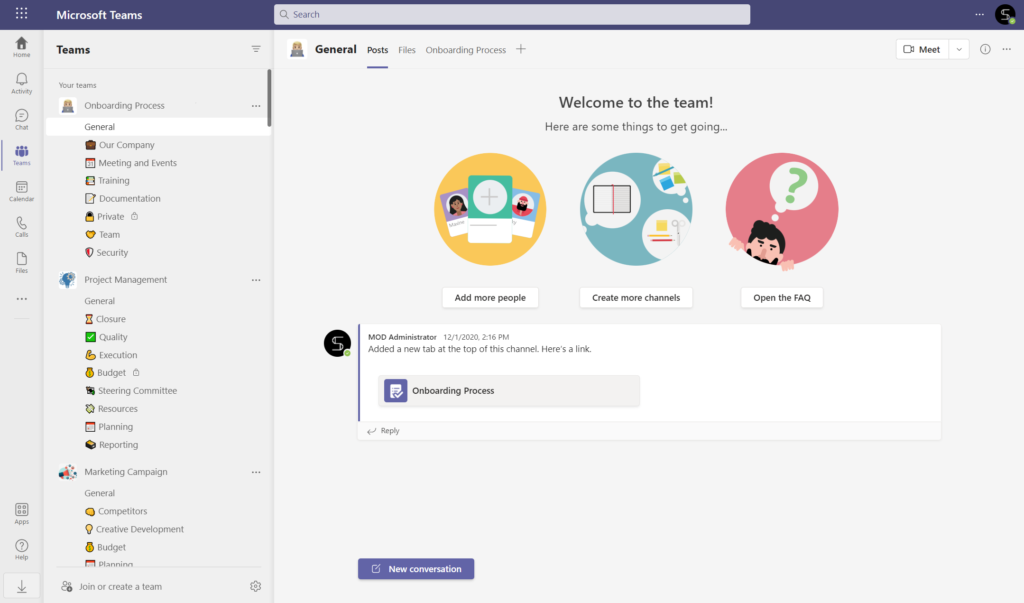
There are different teams which you can create based on your business needs. For example, you may want to create an org-wide team, a team per department, a team for each project, client, deal, campaign, or other repetitive process.
All these teams are backed by SharePoint. For this reason, each team has its SharePoint site that allows documenting all their conversations and shared files. Each user also has their own OneDrive where all the private conversations and files shared in chats are stored.
You can create channels within teams which are more focused spaces that are set based on different areas of discussions. Channels divide the workspace into multiple sectors, or collaboration topics.
Learn about Microsoft Teams channel best practices.
The channel is where the actual work takes place. Channels have tabs that enable conversations and access to documents, resources, apps, and integrations.
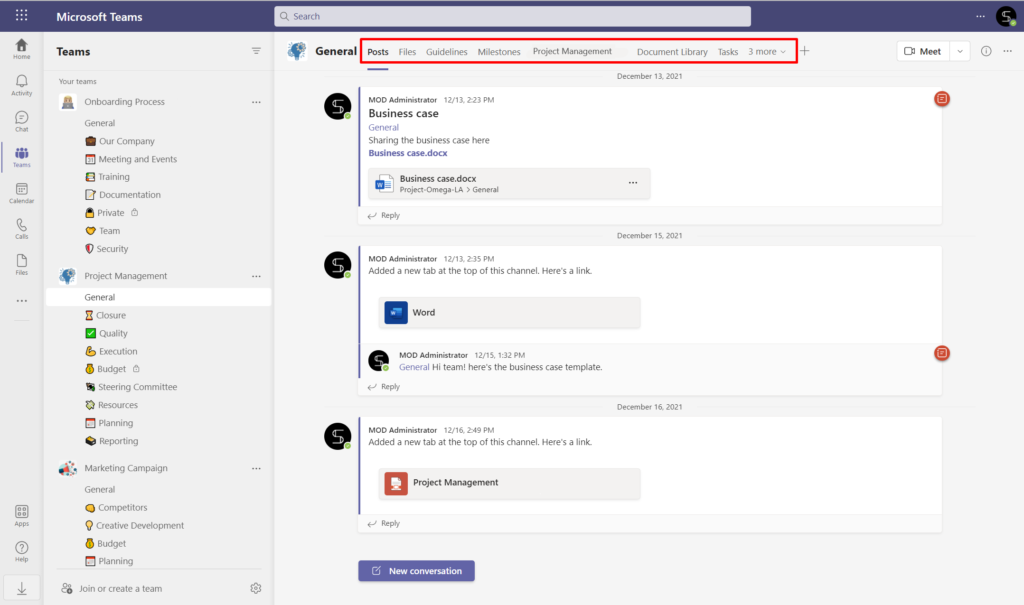
Project Management workspace
Let’s see how a workspace dedicated to project management might look like in Microsoft Teams. This is the place where all your project management team will work together on completing a project. So, you can add the project manager and at least another member of the team as team owner, and the rest – as team members.
Remember that for security reasons and to avoid orphaned teams you need at least two team owners.
Within the team you have a General channel created by default and other channels that represent stages of project implementation as well as subject that need to be addressed during project execution:
- Closure
- Quality
- Execution
- Budget
- Steering Commitee
- Resources
- Planning
- Reporting
Everyone in the team gets access to these channels, including files and conversations shared there except for the Budget channel, which is private. Only private channel members can access it.
You can learn more about private channels here.

Then, you can upload all the necessary files to the Files tab of relevant channels. This way, you can share them with your team mates directly in channel conversations and invite them to collaborate, leave comments, share feedback, etc.
You may also want to add your most frequently used tools as tabs within that team. For example, you can add Planner and build tasks for your project management team. You can separate your tasks into different buckets that will represent stages of the project implementation and then assign them to the right people.
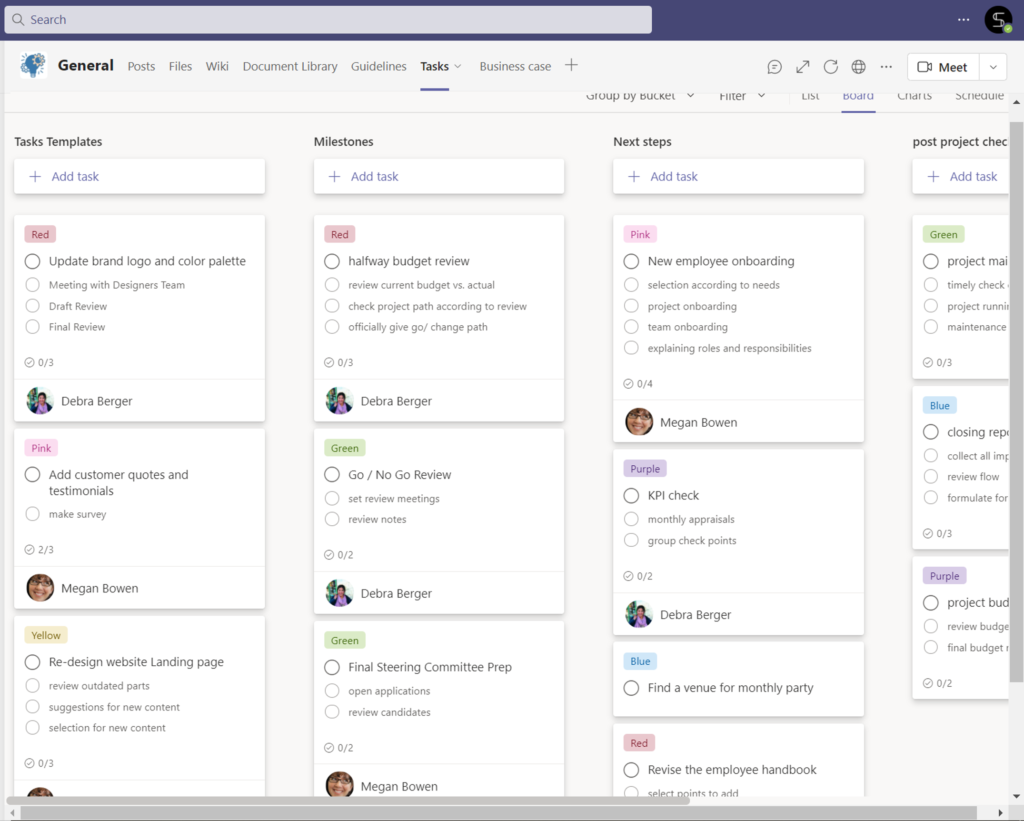
You can also add guidelines through SharePoint, Document libraries, Yammer communities, Power BI reports, and even third-party apps such as Trello or Asana.
This way, you and your team can have all the tools and resources you need to successfully complete a project in one location.
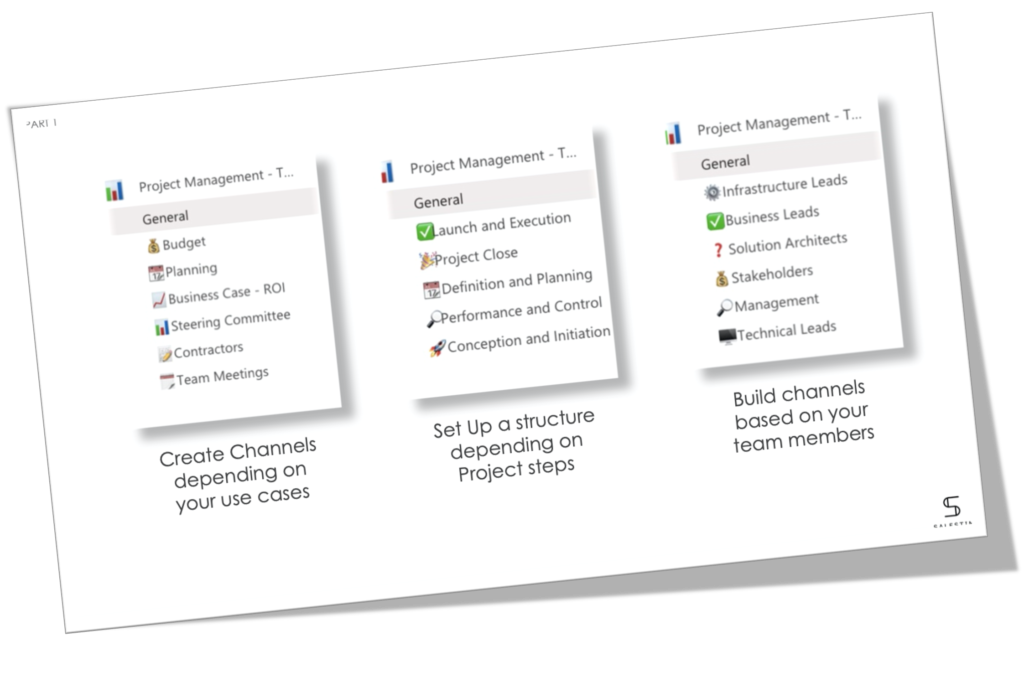
Learn how to run projects efficiently with Project Management Templates 🚀
Each time your start a new project, get a collaborative workspace for your team with the same structure, pre-built set of tasks, and all essential content
Onboarding workspace
You could also have a separate dedicated onboarding workspace, where the HR can invite the new hire. Within this team they’ll have spaces around all the aspects of the onboarding process, such as:
- Our Company
- Meetings and Events
- Training
- Documentation
- Private
- Team
- Security
Within these channels new hires can find all the necessary tasks and information that will help them onboard successfully.
You may want to use Planner to prepare onboarding tasks for your employees. Separate them into different buckets, add checklists, attach links and files if necessary and set the due date.
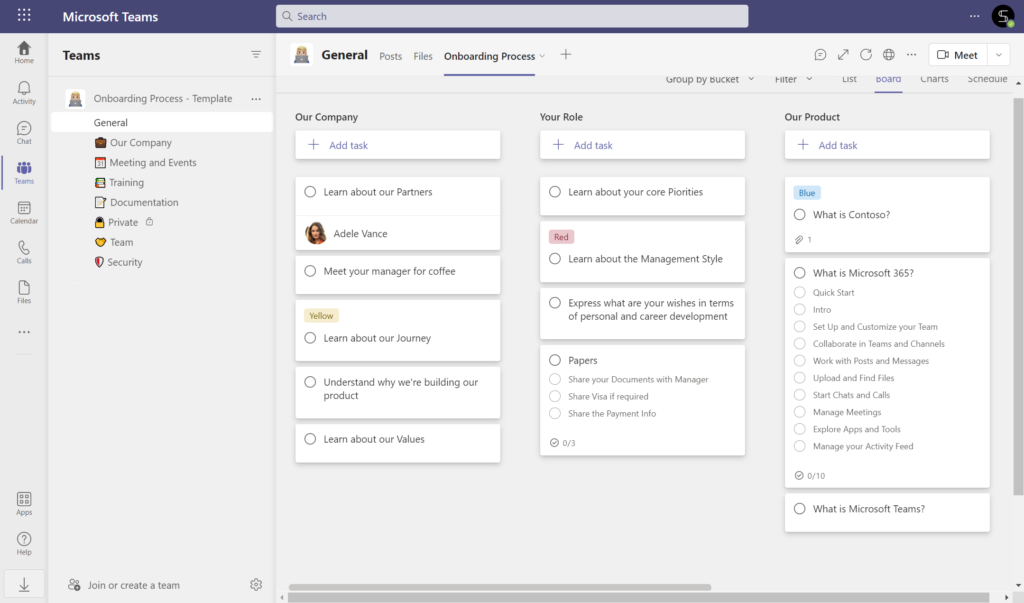
Crisis response workspace
Collaboration doesn’t always have to be around organizing ongoing and redundant tasks. A company could suddenly fall into a crisis or face an emergency that requires immediate collaboration on various levels.
You can create a Crisis Management team to bring together all the right stakeholders and communicate efficiently on how to resolve the crisis.
You may want to create the following channels to help your team member navigate easily through the topics they need to address:
- Budget
- Training Materials
- Communication
- Exec Review
- Planning
- Stakeholders
- Safety Procedures
In this case, the crisis workspace provides a perfect structure to organize the teamwork with interactive conversations and documented file sharing and editing in real-time. Whenever a new member joins this workspace, you won’t spend any time to re-explain everything. Searching the pool of information can be enough to answer questions and put the new member on the right track.
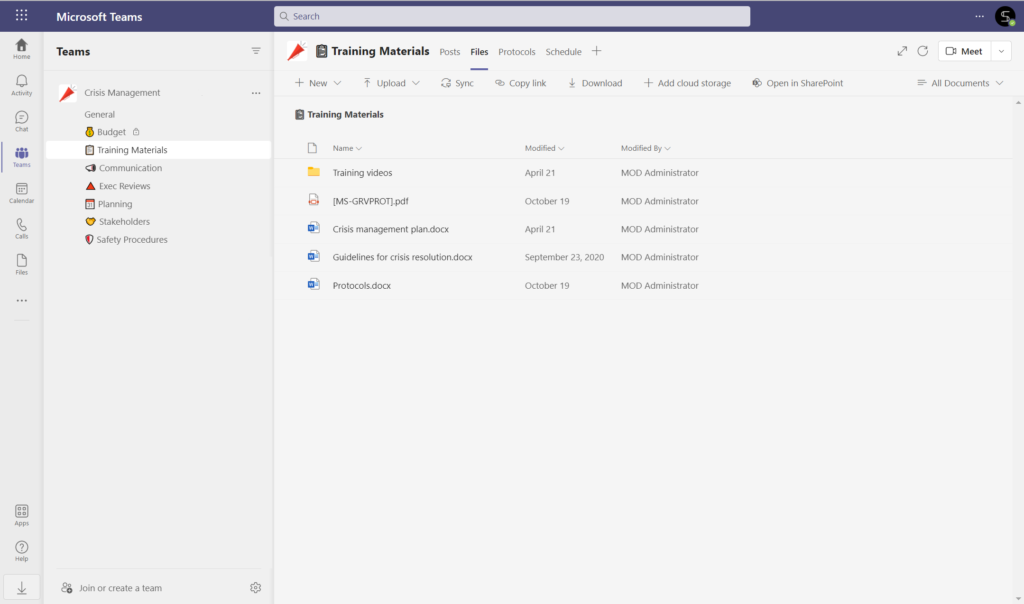
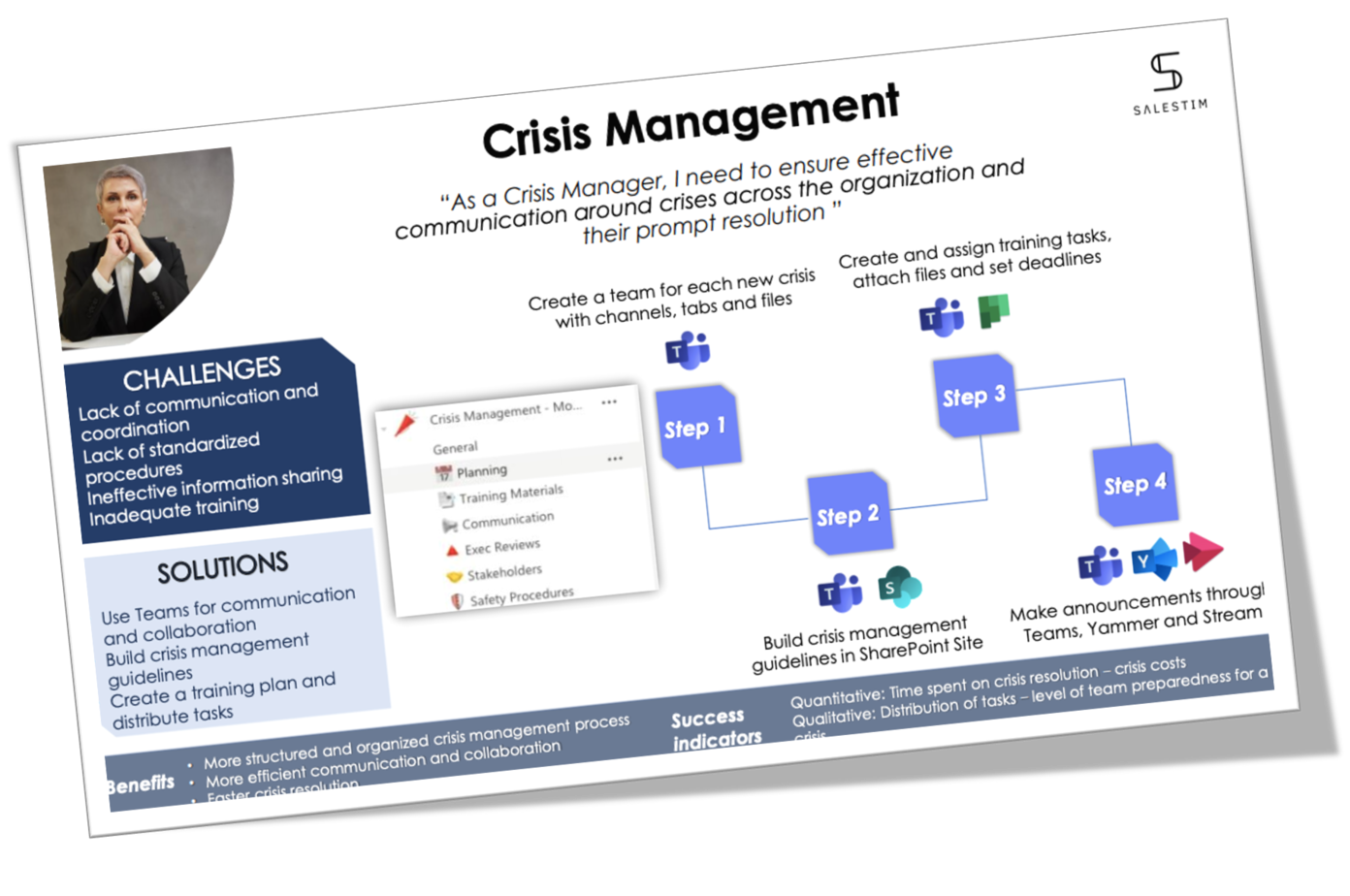
Would you like to explore more use cases?
Download free Microsoft Teams Use Case Catalog
4 steps to effective use of Microsoft Teams
Taking a closer look into a workspace in Teams
We’ll break down Microsoft Teams’ capabilities in a detailed real-life scenario to better describe how you can use it as a collaboration platform. In this example, we’ll demonstrate how you can maximize your experience with Microsoft Teams and benefit from it. Suppose a retail company wants to open a new department store, and for this purpose, a designated project manager supervises all the processes.
The project manager decided to use Microsoft Teams as a collaboration platform. First, you create a new workspace under the name, let’s say “Store Opening,” and inside this workspace, create the following channels:
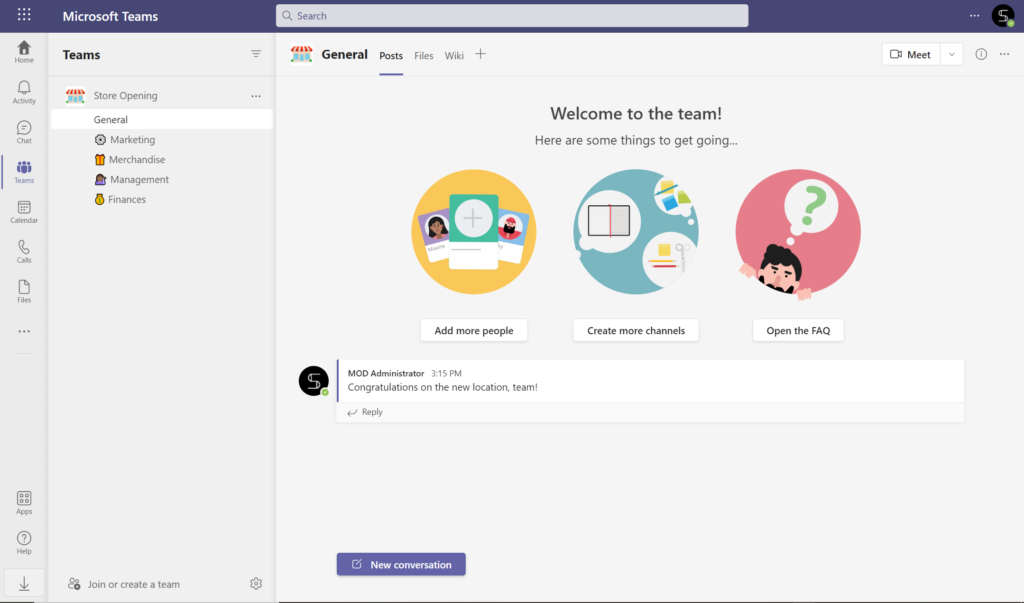
Merchandise Channel
This channel organizes the procurement processes, where conversations can occur about contractors, supplies, competitors, and potential partners. Members can share all related documents like supply contracts, purchase agreements, invoices, etc. They schedule online meetings to review the progress and decide on new suppliers. All team leaders and members join this channel to collaborate on this project and do their part of the project in a timely manner. New suppliers can also join this channel to fill out a form with their potential capacity and general information. Forms is a native app that you can add as a tab in any channel.
Marketing Channel
The marketing team discusses marketing campaigns, shares designs, creates polls, holds brainstorming sessions, seeks approval of creative ideas, and keeps all related advertisement materials documented in one place. They can even embed PowerPoint presentations in this channel’s tab and review them during meetings in addition to placing notes and updating content in real-time.
Financial Channel
The channel keeps track of expenses and funds, shares all invoices and payments, holds regular online meetings with onsite managers and reviews financials in real-time. The members can share, review and co-edit all financial documents as the project moves forward. Furthermore, the bookkeeping app was also integrated as a tab in this channel to quickly access the pool of information and save time switching from one app to another.
Management Channel
It’s a private channel where only top-level managers and key team leaders were invited to discuss sensitive information and track the project’s progress. They can share files and have private conversations efficiently. Using the integration between Microsoft Teams and Channel calendar, the online meetings will be set up in Teams, considering everyone’s schedules and availability.
General Channel
Everyone was invited to stay up to date about the latest announcements and milestones. All general-purpose documents like working hours, rules, and management decisions will be shared in this channel.
These private and public channels will foster engagement and create a collaborative environment where involved team members can interact with each other. Other channels like legal, sales and human resources can also be added.
Structuring channels per requirements
The structural segmentation was based on a departmental approach where each department got a dedicated channel to track their contribution to the project. However, that is not the only possible structure because, in different scenarios, the channels would have been created differently. For example:
- 1st quarter Channel that includes logistics and merchandise teams.
- 2nd quarter Channel that includes marketing and sales teams
- 3rd quarter Channel that includes decision-makers and top managers.
In that case, each time frame was assigned a channel to keep track of conversations, progress, shared files, and documentation. Again it’s always project-dependent, and each project has its requirements.
Integrating relevant tools and apps
Team members across different channels in the same workspace have the freedom to discuss their work privately with their colleagues, share files, co-edit documents simultaneously, hold online meetings, discussions, track progress, receive notifications, and much more. Furthermore, they can integrate Microsoft Teams with a number of native and 3rd party apps to keep all the work in one place.
You can access the integrated apps via channel tabs allowing users to interact with their preferred apps within the Microsoft Teams interface. For instance, the marketing team can integrate the Approvals app to automate the process of approving new posts, articles or campaigns. They can also add Power BI to their channel which will help them visualize the data from their campaigns and make data-driven decisions.
There are many other excellent tools available within Microsoft Teams that you should definitely take advantage of. For example,
- The Planner app will quickly become your favorite task management tool.
- Lists is the perfect tool for keeping and accessing records.
- AdobeSign will help you put electronic signatures quickly and easily.
To explore more apps, simply go to the Apps section and you will find a myriad of solutions for any need.
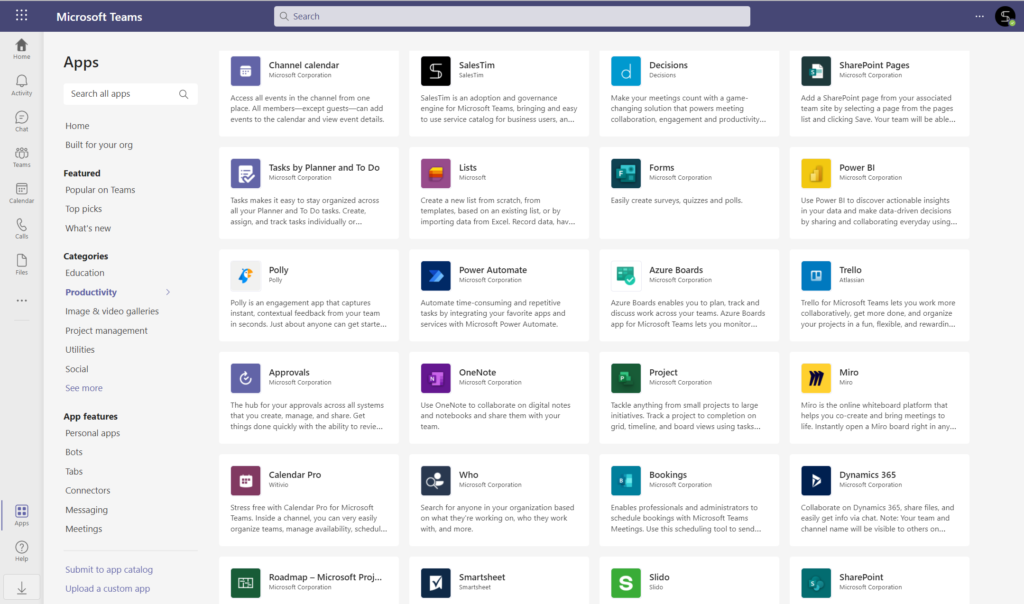
Scaling the collaboration with templates
Microsoft Teams is an excellent solution but managing it certainly takes time and energy. Fortunately, there are solutions in place that can significantly reduce the maintenance of your Microsoft Teams workspaces.
Collaboration Templates by SalesTim allow you to create a template workspace with all its configurations (e.g., channels, members, apps/tools, documentation, etc.) and then replicate it. It becomes a pre-built collaborative workspace that you can reuse and make adjustments if needed.
Going back to our example of the department store. Suppose you’re opening 10 different locations at the same time. So, you have 10 different projects to manage but they all follow the same/similar structure. So, here is what you do:
- Create all the necessary channels (both public and private) for focused discussions.
- Upload all the content and file templates required to run projects
- Connect your everyday tools such as PowerBI, Forms, Lists, etc. to increase team productivity
- Add repetitive tasks in Planner. Separate them into buckets that represent project stages.
- Add all the key people to the channels.
And just like that you have a ready-to-go pre-build collaborative workspace that you can replicate for the rest of the 9 stores in a matter of seconds.
You can create templates for any business process in your organization and store them in your Template Catalog. From there users will choose the template they need and create a new pre-built workspace within seconds.
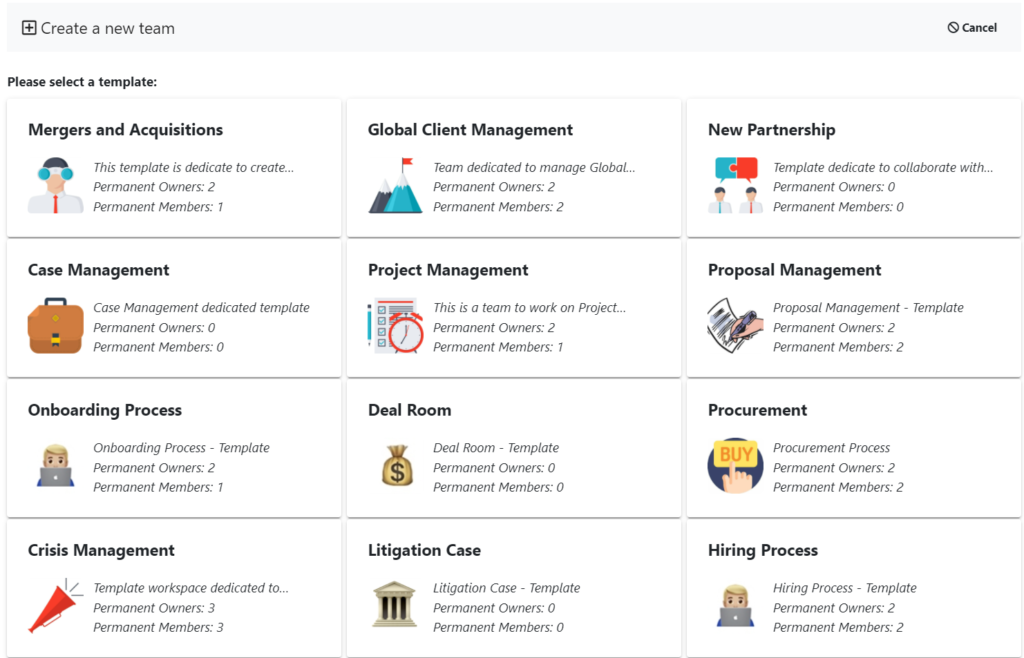
As you start using Microsoft Teams in your company, you will slowly discover its wide range of services and collaboration features. The high flexibility it offers will make it the perfect solution to organize all processes and develop optimized workflows. Make sure that you also utilize the power of templates to benefit from pre-built collaborative workspaces.


